Why Is Food Safety Important In Healthcare? Healthcare Leaders Guide
Learn challenges healthcare foodservice teams face today and key food safety practices to protect vulnerable patients. Get a free healthcare leader...
Wondering how to sell food on Amazon? Let's start with an eye-opening fun fact about Amazon grocery sales.
By 2025, online sales in the United states are predicted to capture approximately $100 billion of total retail grocery sales.
What's more, Amazon leads online grocery sellers with $8.2 billion in sales, followed by Walmart ($2.4 billion) and Kroger ($1.5 billion). Demand from people who are selling food on Walmart and Amazon as their retailers of choice is also rising, so there's no better time to delve into food entrepreneurship.
WHAT WE'LL COVER:
But why focus on food safety when there are so many other aspects of selling on Amazon to consider? Simply put, it's non-negotiable. Amazon has strict and clear policies and regulations in place to protect consumers, and failure to adhere to these standards can result in severe consequences, from account suspension to legal liabilities. (We'll go into specific details below.)
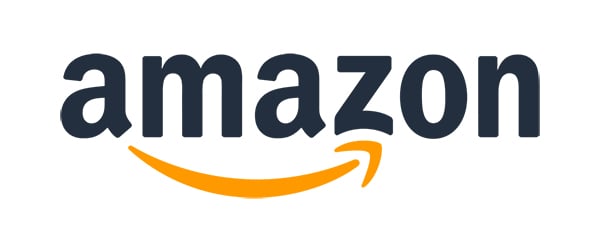
There are a few steps involved in getting approved to sell food on Amazon, but it's fairly straightforward. The reason for the additional steps is because the Grocery and Gourmet Foods category is restricted until your Amazon seller account gets approved.
And it makes sense why — obviously food safety has more risks than mailing notebooks or gym shorts. Here's what you need to do.
Before hopping into your Seller Central dashboard, grab the ASIN of a grocery product and then go into your account to "Add a product".
You'll be prompted to select "Apply to sell" and right after that "Request approval".
If you have a positive selling history with Amazon from other products you've sold, there's a chance you could be approved automatically. But more often than not, it can take up to a few days.
When it comes to selling food on Amazon, they want to know what kind of business you are:
You'll also need to submit one or more purchase invoices from your manufacturer or distributor to prove that you're legitimately holding (or going to be holding) the products you want to sell. Your documents must:
The individual approving your account might actually contact your food product vendors, so make sure all the details are correct before submitting the documents.
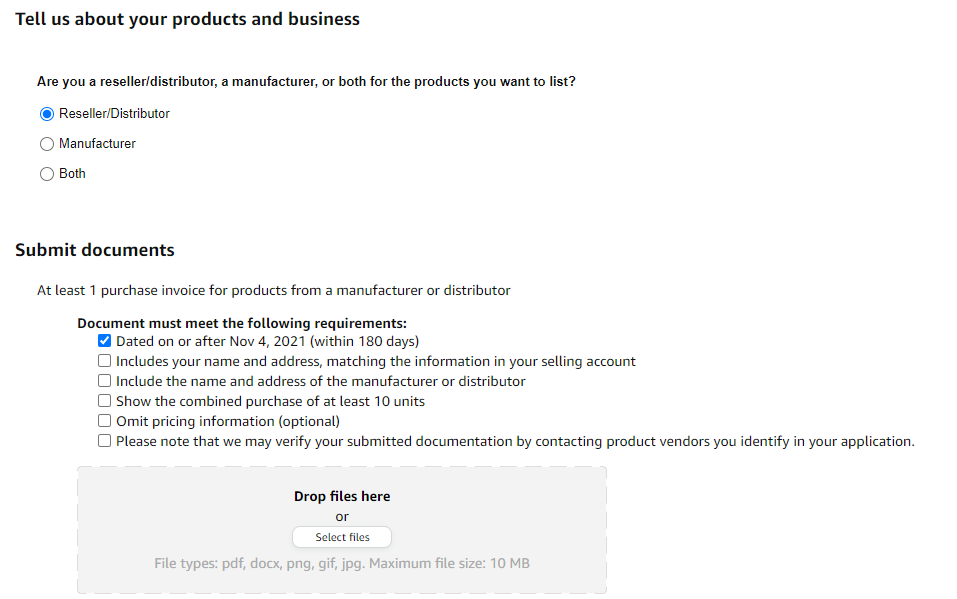
In addition to your documents, you'll also need to provide photos of your food product and its packaging once you receive them. These photos must:
Even after you complete those steps, providing all the proper double-checked documentation on your end, there are times when you don't get approved.
Be encouraged and don't panic! Especially if you've done everything by Amazon's book. Simply re-submit your application again (and again, if necessary). It's unfortunate but if you persist, your food business will benefit greatly from Amazon's ecosystem and the reach it can give you.
So, you've taken care of the logistics of signing up and readying your account. It's time to make sure you meet all of the seller and product requirements.
We mentioned above that Amazon's regulations and policies for food are more stringent than other categories. As a result, there are specific things you need to do as a food business to stay compliant.


Thank you for downloading Food product specification sheet!
Want to get a customizable HACCP template?
Or set up your food safety system in 15 minutes?
There are a few performance targets you need to meet in order to sell food on Amazon:
When it comes to food safety, this is what's expected of sellers:

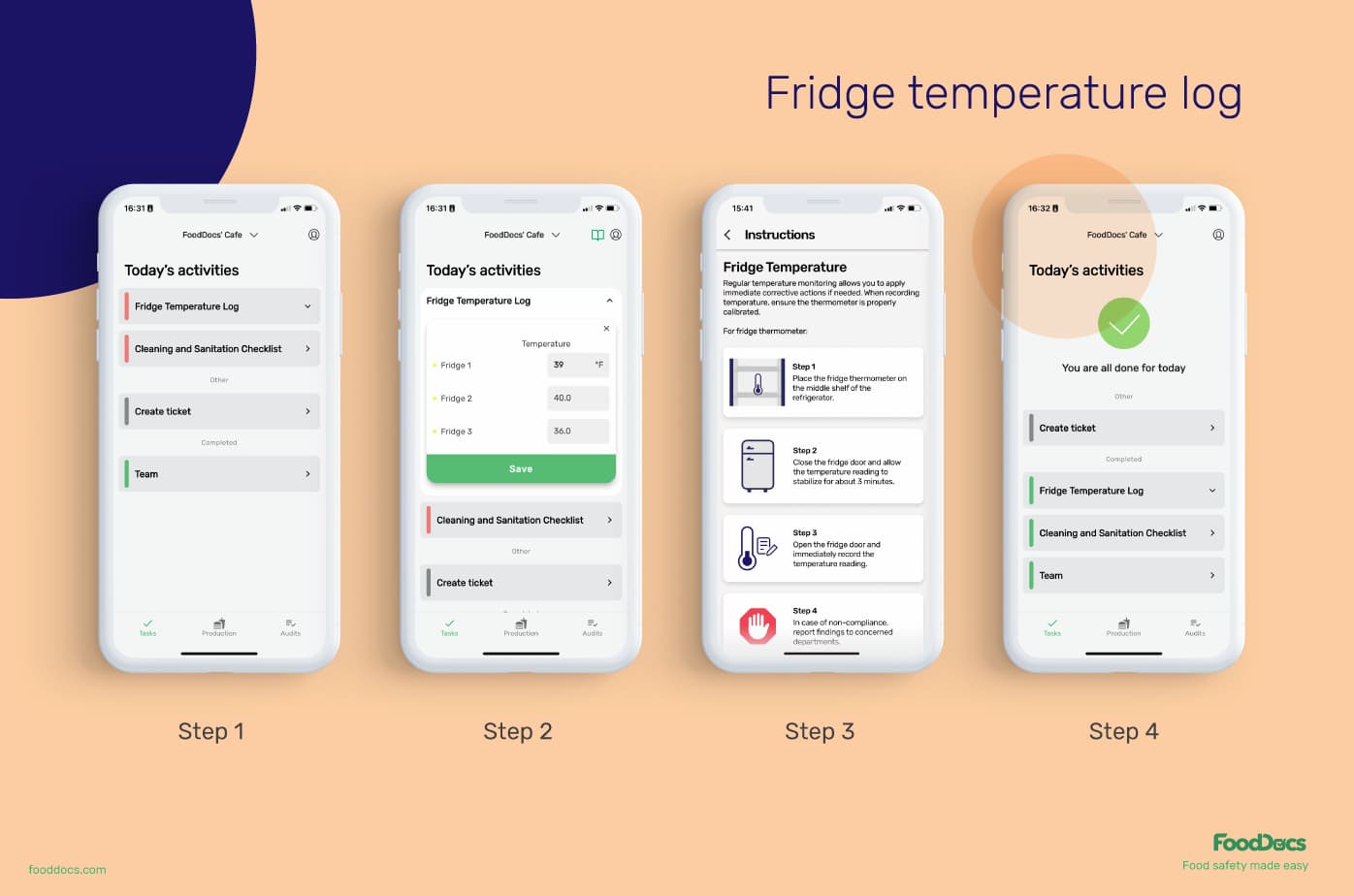
Digitize your fridge and freezer temperature checks with FoodDocs to make logging temperatures easy, accurate, and organized.
To ensure food safety and quality, businesses must be able to confidently control the temperature of refrigerated food, frozen food, and raw agricultural commodities.
Failing to keep food products at or within their temperature range (see the table below) could result in Amazon suppressing them, or worse, suspending your seller account.
As a general rule of thumb — just like your taxes — always keep your validation and verification records store safely and, ideally, digitally so that you can promptly share them with Amazon and food safety regulators upon request.
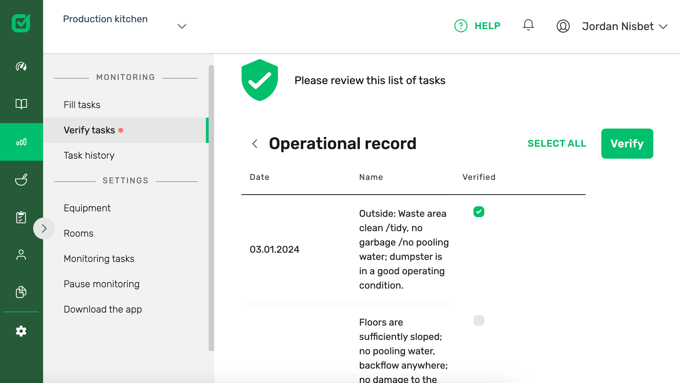 Easily verify monitoring tasks in the FoodDocs app. The timestamp displays the entry's time, date, and person who added it; the green batch proves that this entry is verified and cannot be further changed.
Easily verify monitoring tasks in the FoodDocs app. The timestamp displays the entry's time, date, and person who added it; the green batch proves that this entry is verified and cannot be further changed.
| Food type | Conforming temperature |
|---|---|
| Refrigerated meat |
28-41° F / -2.2-5 ° C |
| Refrigerated poultry | 28-41° F / -2.2-5 ° C |
| Refrigerated fish and crustacea (crab, shrimp, lobster) | 32-41° F / 0-5 ° C |
| Refrigerated processed dairy products or liquid eggs | 32-41° F / 0-5 ° C |
| Refrigerated processed foods | 32-41° F / 0-5 ° C |
| All refrigerated cut fruits, vegetables, and ready-to-eat fruits and vegetables | 32-41° F / 0-5 ° C |
| Refrigerated shellfish (clams, mussels, scallops, oysters) | 32-45° F / 0-7.2 ° C |
| Refrigerated shell eggs or fluid milk | 32-45° F / 0-7.2 ° C |
| Frozen foods | <10° F / <-12.2° C |
| Whole, uncut, not ready-to-eat produce | 32-65° F / 0-18.3 ° C |
| Bananas | 56-64° F / 13.3-17.7 ° C |
Your food business must follow listing standards for any of the food products you sell in order to stay get and stay compliant with Amazon's Grocery and Gourmet Foods category policies. This includes showing:
Just because you get approved does not mean you'll stay approved. Just like food safety certifications, you can get a good rating one inspection, but if the next one fails there can be dire consequences.
In Amazon's case, that's being disallowed from selling food on Amazon. Specifically:
That was a lot of information. But as a food business wanting to expand their operations to include selling on Amazon, it's all necessary information.
While many sellers become concerned with what selling tools they should use, we cannot understate how powerful an all-in-one food safety software will be for your business. An effective food safety software will help you get and stay compliant.
In fact, implementing one helps you be able to focus on the marketing, scaling, and customer service side of things because you won't need to spend hours on tasks like temperature checks and filling out receiving logs with pen and paper.
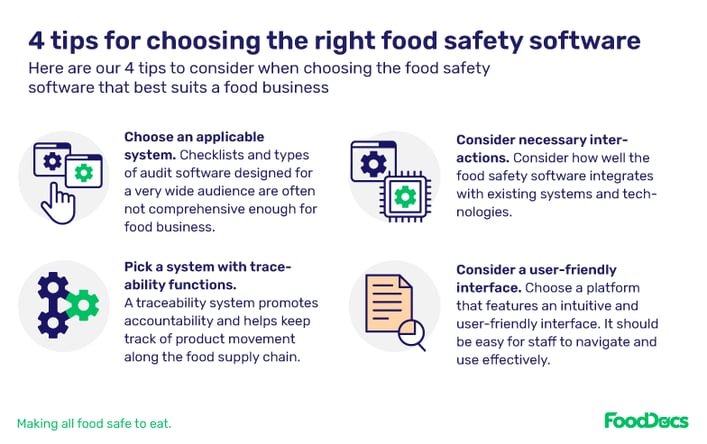
The easiest way to set up a proper food safety management system is to use FoodDocs . With FoodDocs' software, you’ll get all the food safety compliance documents you need to start selling on Amazon, including:

Amazon doesn't necessarily require a business license for you to become a seller. However in the United States, for example, if you want to sell food, many small and medium enterprises need a combination of licenses and permits from both federal and state agencies to legally run their business. This will vary from country to country and state to state.
That said, Amazon has requested sellers in the Grocery and Gourmet Foods category to provide, for example, a current GFSI (Global Food Safety Initiative) or HACCP (Hazard Analysis Critical Control Point) certificate.
If you're unable to provide the compliance document in question, Amazon can remove your listing and even temporarily or permanently suspend your store.
One member of a Seller Central forum shared the requirements they received from Amazon:
GFSI or HACCP
You must submit all required documents. Your products cannot be approved if some documents are missing.Document must meet the following requirements:
Current GFSI (Global Food Safety Initiative) certificate(s) for the manufacturer from an accredited 3rd party certification body for the ASIN OR current HACCP (Hazard Critical Control Point) certificate(s) for the manufacturer from an accredited 3rd party certification body for the ASIN.
I authorise Amazon to inspect the documents and information, and share them with authorities upon request. Providing fake documentation could lead to closure of my account.
I confirm that I have read the Help page on food supplements and acknowledge my responsibilities.
By ticking this box, I acknowledge and accept all the conditions above.
Another business selling pet supplements had their account reinstated only after they submitted two COAs: the first from the product manufacturer and the second from the ISO-certified laboratory in the United States.
Stories like these ones emphasize just how critical food safety is for all types of Amazon sellers. Save yourself the headache and proactively obtain food safety compliance documents, then upload them during your category approval request.
Once you have food safety compliance covered, here are a few more types of tools that will help you simplify operations, stay organized, and scale your business.
You can absolutely do this stuff manually, but time is money. So consider exploring investing in Amazon selling software to make your food business more efficient, for example:
Finding reliable suppliers will be the difference between high quality and consistency of your food products, or the polar opposite. Supplier sourcing software helps streamline the process of identifying and vetting potential suppliers, ensuring they meet not just your personal standards for quality, reliability, and compliance but regulatory standards, too.
The best tools will provide access to extensive supplier databases, facilitate communication with suppliers, and offer features for comparing quotes and negotiating contracts.
Some resources to check out are:
Optimizing your Amazon food product listings will help increase your brand's visibility, drive more, and maximize sales. Product listing optimization software helps you create compelling product listings that use the best keywords, remove the fluff from listing info, and make your listings eye-catching.
These tools often offer keyword research, competitor analysis, and automated optimization features to help you rank higher in search results and convert more visitors into customers.
Some resources to check out are:
As your food business grows, being able to manage your inventory becomes increasingly important. It'll help you avoid going out of stock, minimize storage costs, and maximize profitability. Inventory management software helps you track inventory levels, forecast demand, and optimize replenishment processes to ensure you always have the right amount of stock on hand.
Amazon has their very own built-in tools, but there are others that are also great for managing multiple warehouses, setting reorder points, and generating reports to analyze sales trends and inventory performance.
Some resources to check out are:
By leveraging these software tools, you can streamline your operations, optimize your product listings, and effectively manage your inventory to drive growth and success as a food seller on Amazon.
Yes, you can sell food on Amazon. But there are some regulatory and compliance hoops you need to jump through first, including but not limited to: ungating your your seller account, and proving the safety and quality of your food products with Certificates of Analysis (COA) or certifications confirming that the manufacturer is FDA registered and uses a facility that's certified by a globally-recognized food safety standard.
These requirements can seem daunting but you can absolutely accomplish them with relative ease, especially with the help of food safety software and other tools. (It's one of the reasons we built FoodDocs!)
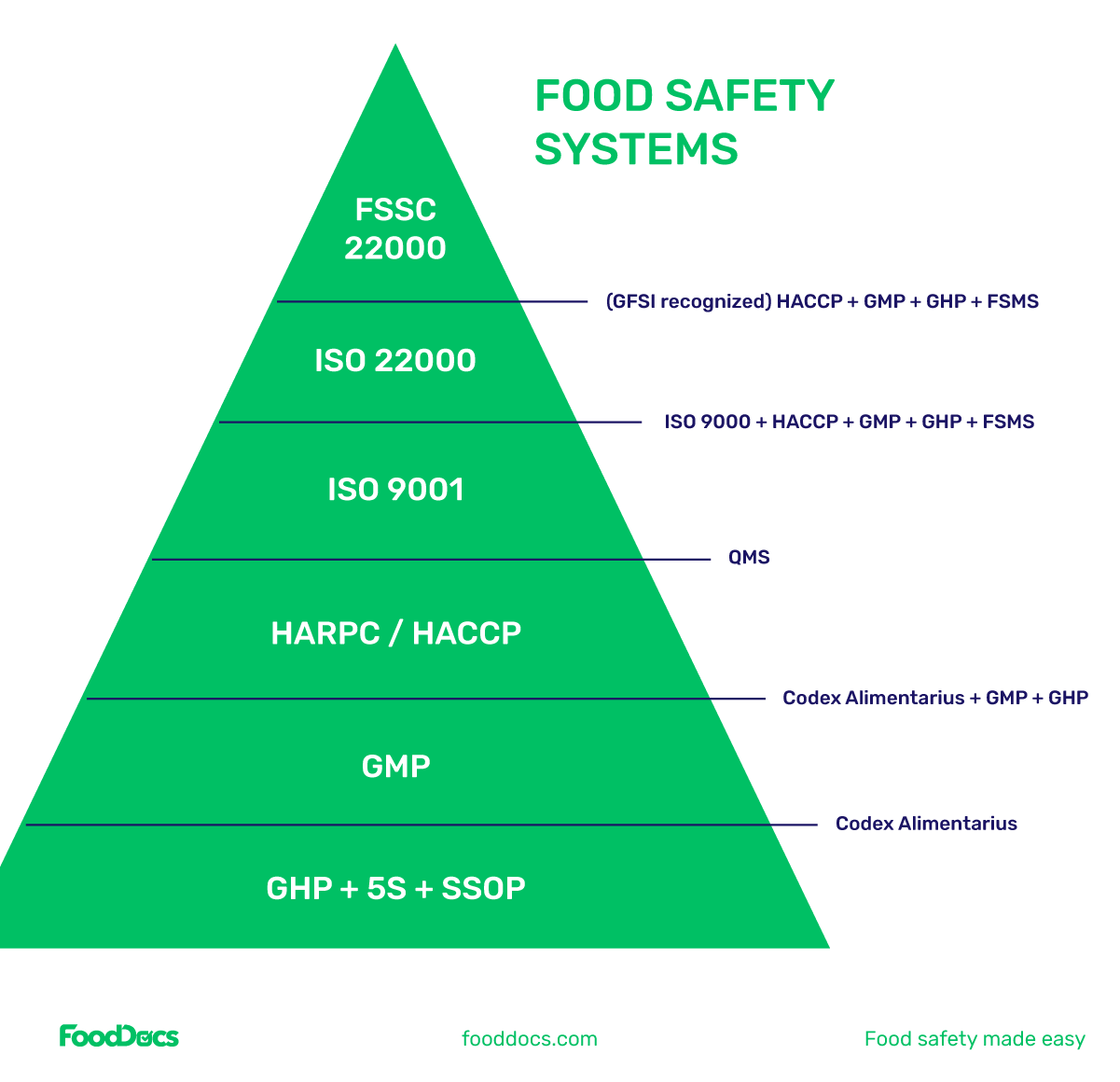
Any steps you'll need to take to sell food on Amazon are also determined by whether you want to sell products that are refrigerated or ones that are shelf-stable.
Once you figure out the type of food products you want to sell on Amazon, they'll need to approve your account which will allow you to sell products in the grocery category.
Of course, your business decision to sell food on Amazon with good and not-so-good factors to consider. So let's take a look at what they are.
Amazon offers significant opportunities for growth and success in the food business space. Remember: online grocery sales are projected to reach $100 billion by 2025, with other estimates being even higher.
While the process involves navigating regulatory hurdles and ensuring compliance with Amazon's stringent policies, you can't deny the benefits of reaching a vast audience and leveraging built-in marketing tools.
Investing in food safety compliance software like FoodDocs, leveraging specialized software tools, and staying vigilant in meeting seller and product requirements will enable food businesses to build and scale their brands on Amazon and capitalize on the growing demand for online grocery shopping.
Yes, digital food safety monitoring is compliant with regulations and acceptable for inspectors.
In a December 2023 issue of the journal Food Control, competent authorities (CA) across 15 European Union countries reported that they’ve incorporated digital environments to some extent during their food safety inspections. In fact, “62.5% (55/88) used a digital environment during inspections, the majority to standardize data collection and reporting. CAs autotomize processes through digital technologies related to the management of official control and generation of inspection results, but to a lesser extent to automatize decision-making during inspections.”
Furthermore, the USDA Food Safety and Inspection Service’s Compliance Guidelines for Use of Video or Other Electronic Monitoring or Recording Equipment, it states: “If an establishment determines and designates a video or other electronic monitoring or recording equipment to record the required HACCP information, this information is to be included as part of its recordkeeping system description.”
The Government of Canada's article about record keeping for your preventive control plan also confirms that, based on their definition of "record", digital food safety records are compliant and acceptable: "A record is a type of document that permanently captures information demonstrating that an action was taken. It can be in either hard copy (printed) or electronic (digital) format. The information can take various forms such as text, figures, graphics, data pictures and videos."
Yes, there are particular food and beverage items that Amazon prohibits. Some of the most popular ones are:
As a general rule, Amazon prohibits products that don't meet federal food inspection or import requirements, products that don't meet Food & Drug Administration (FDA) premarketing requirements, and products that don't meet California’s Farm Animal Confinement Initiative requirements. There are other specific food products, both foreign and domestic, that Amazon prohibits and you can find the full list here.
No, Amazon will not allow items that expire quickly. If you're using Amazon FBA, food products must arrive at their facility with a minimum remaining shelf life of over 90 days. Amazon will dispose of your products if it's within 50 days of expiry, for example, even if it isn’t past the expiration date. The strict policy is to protect customers from receiving and potentially consuming expired food products that could result in foodborne illness.
In terms of what defines an expiration date, Amazon treats "sell by," "use by," "best by", "best before," and "best if used by" dates to be the same thing.
You can approve multiple food orders at once in three steps:
Selling food products on Amazon can be profitable, but there are many factors that will impact positive or negative results as an Amazon seller. The profit margin for food products in Amazon's Grocery and Gourmet Foods will vary greatly depending on your niche, operational overhead, shipping fees, and more.
Learn challenges healthcare foodservice teams face today and key food safety practices to protect vulnerable patients. Get a free healthcare leader...
Learn what Standard Operating Procedures (SOPs) are and how to write effective SOPs that ensure consistency, efficiency, and safety in your...
Boost your retail food safety with essential practices and digital tools to protect customers and your brand. Plus a free Retail Food Safety Leader...